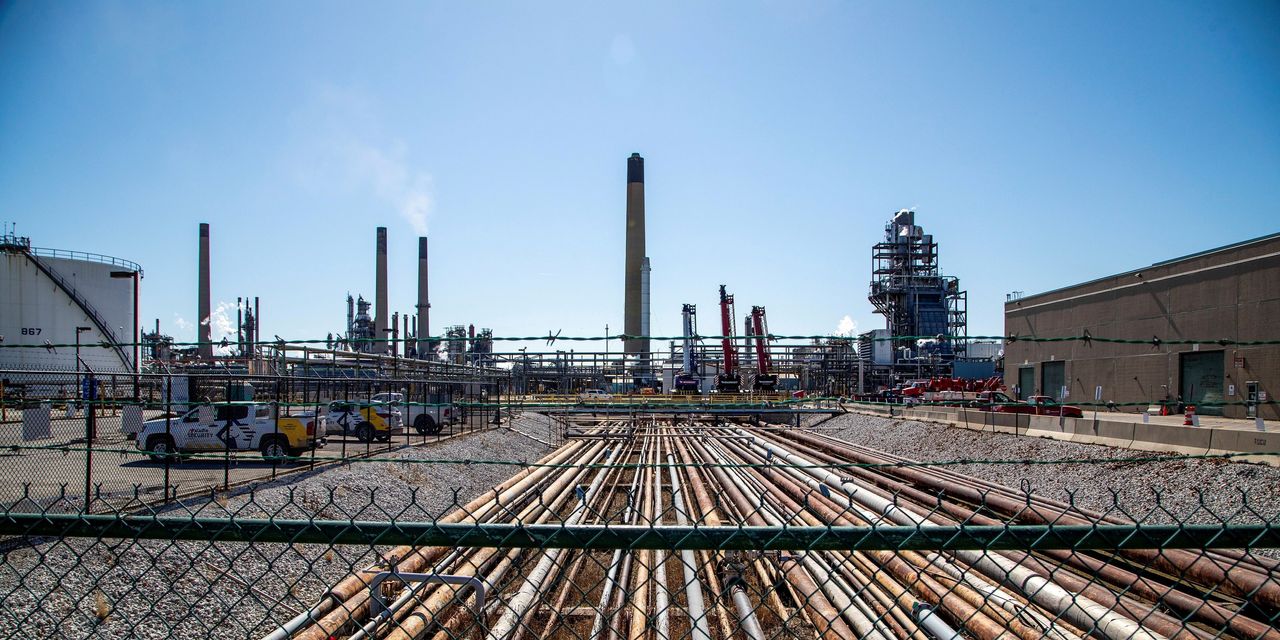
The Omicron variant’s emergence will allow the supply of oil to overtake the rate at which the world is consuming it, easing the supply tightness of recent months, the International Energy Agency said Tuesday.
The IEA trimmed its 2022 supply forecast from non-OPEC producers by 100,000 barrels a day and cut its demand forecast by the same amount, saying it expects the surge in coronavirus cases to stymie the recovery in global demand.
Air travel and, in particular, the consumption of jet fuel, will be most affected by the Omicron variant, the IEA said in its monthly market report. But overall, the variant’s emergence will “temporarily slow, but not upend, the recovery in oil demand,” the Paris-based energy watchdog said.
Fears that the global economic recovery and resurgence in oil demand would feed inflationary pressures prompted major crude-consuming nations to tap their strategic oil reserves in November, just as Omicron infection rates began to gather speed.
Oil prices sharply dropped on fears about the variant’s impact on the global economy, “but initial pessimism has now given way to a more measured response,” the IEA said in its report.
Brent crude—the global benchmark—shed 0.9% on Tuesday to end at $73.70 a barrel. U.S. crude futures fell 0.8% to $70.73. Both benchmarks have regained ground this month but remain well below the October peaks, when prices were around $85 a barrel.
The IEA’s opinion that Omicron’s impact will be relatively muted echoed the Organization of the Petroleum Exporting Countries’s view. However, there is a gap between the two energy bodies’ assessment of global oil production in the year ahead.
The Vienna-based cartel referred Monday to a lack of investment by oil-producing countries outside its OPEC+ alliance as “limiting growth potential,” but the IEA highlighted that the U.S., Canada, and Brazil are expected to pump at record levels, lifting non-OPEC production by 1.8 million barrels a day in 2022.
The IEA said that Saudi Arabia and Russia—the two leaders of OPEC+—could also set production records, if the alliance continues its policy of unwinding production cuts implemented last year when the pandemic’s global economic impact at its worst.
That steadily rising output may combine with slightly lower demand than previously expected to create a 1.7 million barrel a day surplus in the first quarter of 2022.
Most of the hit from Omicron will be absorbed by the aviation sector, with flight schedules being adjusted to account for new travel bans.
In its report, the watchdog said it expects jet fuel and kerosene demand to fall by 150,000 barrels a day on average from the final quarter of this year to the first three months of next year, although consumption of the fuel is still expected to sharply increase overall in 2021 and 2022.
The IEA said it expects the world’s thirst for oil to return to its pre-pandemic level during the course of next year.
Write to David Hodari at [email protected]
Copyright ©2021 Dow Jones & Company, Inc. All Rights Reserved. 87990cbe856818d5eddac44c7b1cdeb8
Appeared in the December 15, 2021, print edition as ‘Omicron Expected to Ease Tight Supply of Crude Oil.’








